Learning about the New Forest’s Prehistoric past
PUBLISHED ON: 17 NOVEMBER 2020By Hilde van der Heul, Community Archaeologist
During recent excavations near Beaulieu, archaeologists and volunteers uncovered the remains of an unusual Bronze Age monument dating back over 4000 years. Archaeological digs were undertaken over two fieldwork seasons in 2018 and 2019 on the Beaulieu Estate in the New Forest and provided a fantastic opportunity for local residents to connect with those who lived in the same landscape during Prehistory. Over 40 volunteers contributed to the fieldwork which was supported by the National Lottery Heritage Fund through the ‘Our Past, Our Future’ Landscape Partnership Scheme.
Aerial photographs and LiDAR (aerial laser scanning) surveys had shown what was thought to be the remains of a Bronze Age round barrow. Round barrows were created in every part of England, mainly between 2200BC and 1100BC. Over 200 of these still survive in the New Forest today, and they can be identified as round mounds, often surrounded by a ‘ring ditch’ from which the earth for the mound was dug. This particular example sits within a rich archaeological landscape with nearby features spanning a wide date range, including a possible Roman temple and a Second World War gun emplacement and airstrip.
In spring 2018, volunteers from the LoCATE geophysics programme undertook a geophysical survey on the presumed barrow. This survey identified not only the ring ditch itself, but also interior disturbance within the monument, which might indicate the presence of a primary burial or perhaps later disturbance from Antiquarian exploration.
At least two phases of activity and a small cluster of Middle Bronze Age cremation urns were discovered.
A follow-up excavation was undertaken in summer 2018 to further explore the site, conducted by New Forest National Park Authority volunteers with professional support from Bournemouth Archaeology. A week-long dig in summer 2018 involved partial excavation of the ring ditch. At least two phases of activity and a small cluster of Middle Bronze Age (c. 1500-1100 BC) cremation urns were discovered, three of which were lifted in their entirety to be analysed at Bournemouth University. These contained cremated human bone and had been inverted and placed into small pits.
The gap was a significant find and hints at a more complex function than a ‘simple’ barrow.
The two-week 2019 season, which again included local volunteers and support from Bournemouth Archaeology, saw two further trenches dug in order to learn more about the structure and dating of the ring ditch. Another Middle Bronze Age cremation urn was found in one of these trenches but was left in situ. The other trench confirmed the presence of an unusual gap in the ring ditch which may have served as an entrance into an interior space. The discovery of this gap was a significant find and hints at a more complex function than a ‘simple’ barrow.
After the 2019 excavation extensive post-excavation work was undertaken, including specialist assessment of the flint and ceramic finds, micro-excavation of recovered cremation urns, human bone analysis, and radiocarbon dating. Analysis of environmental samples also sought to understand the surrounding landscape at the time the monument was constructed.
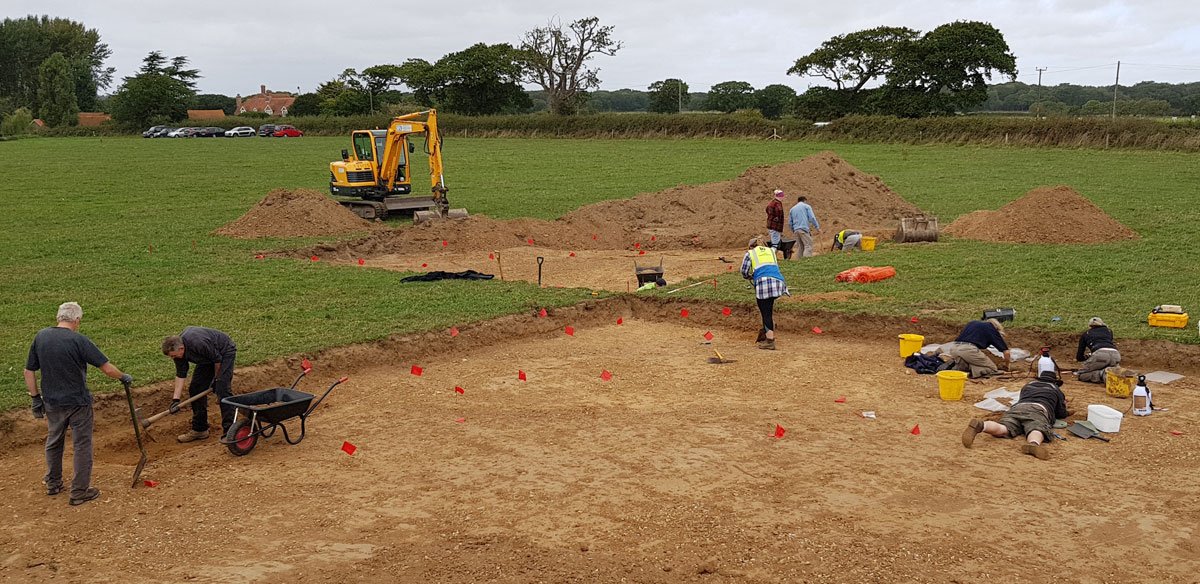
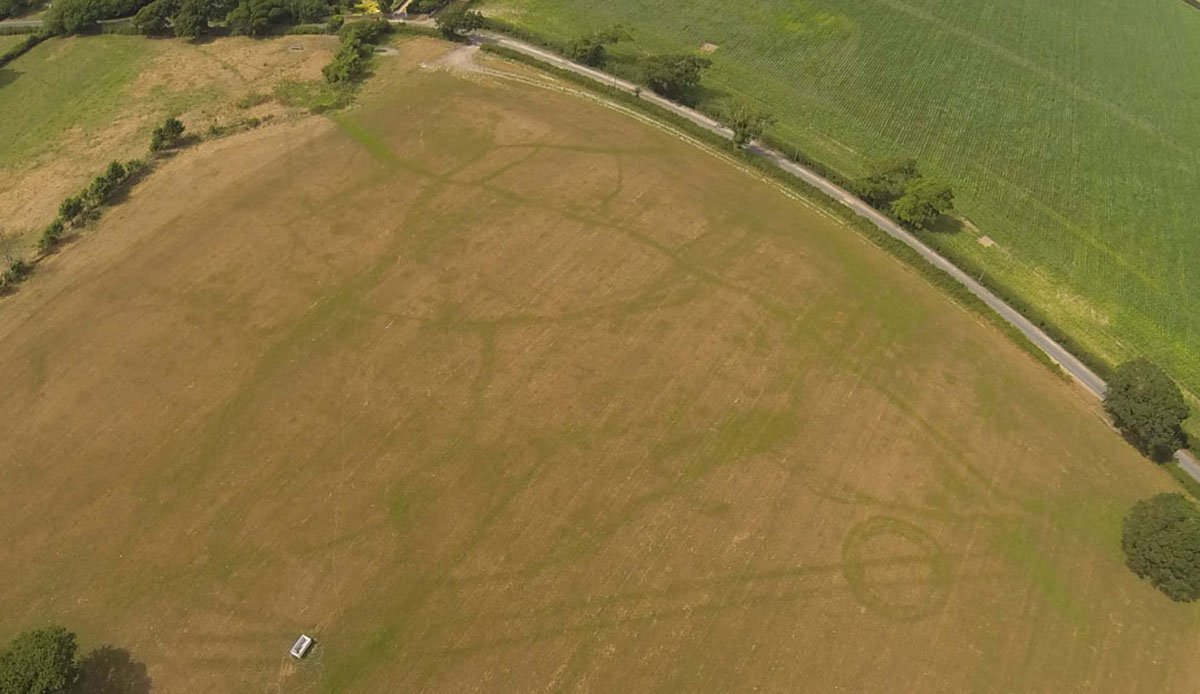
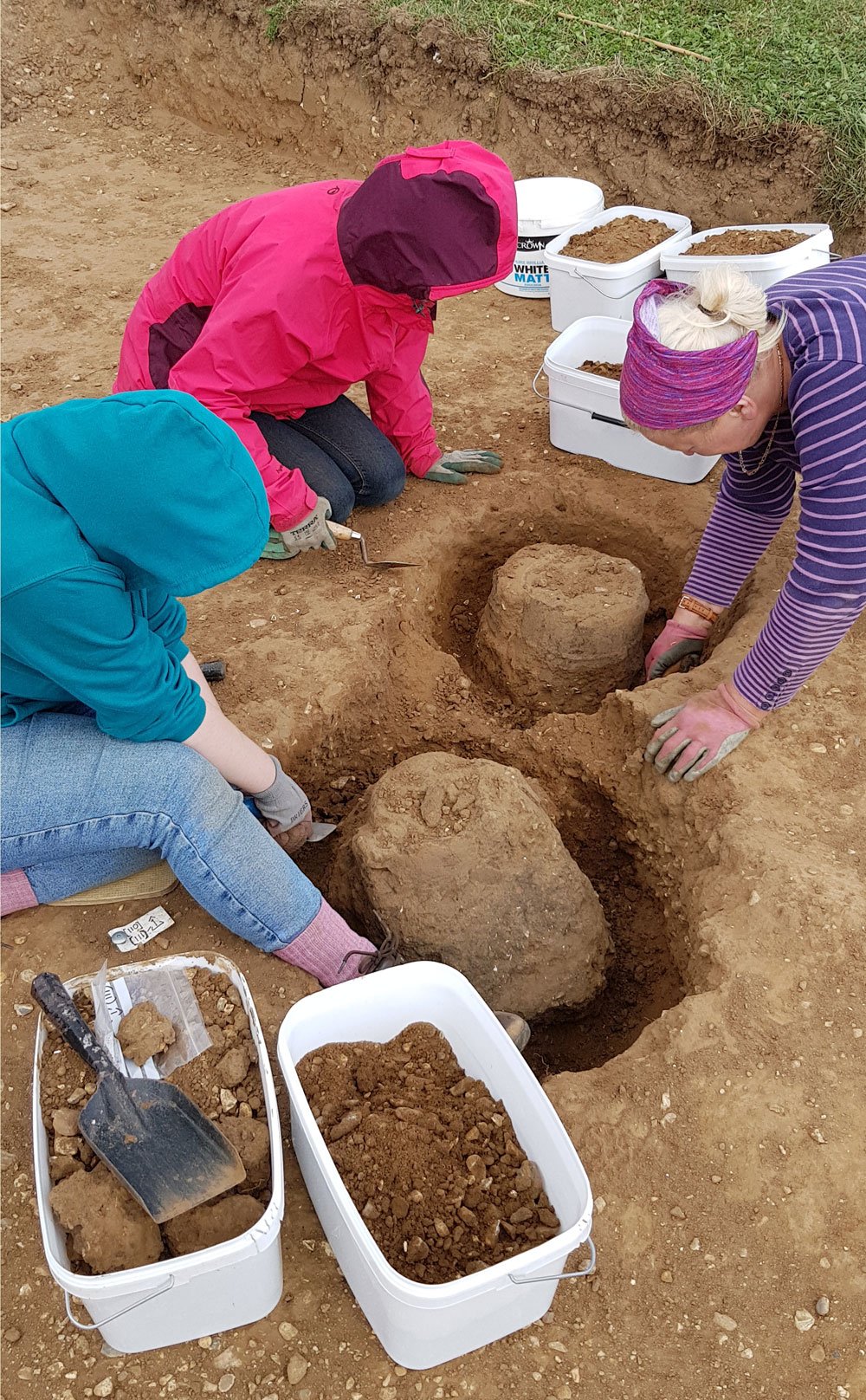
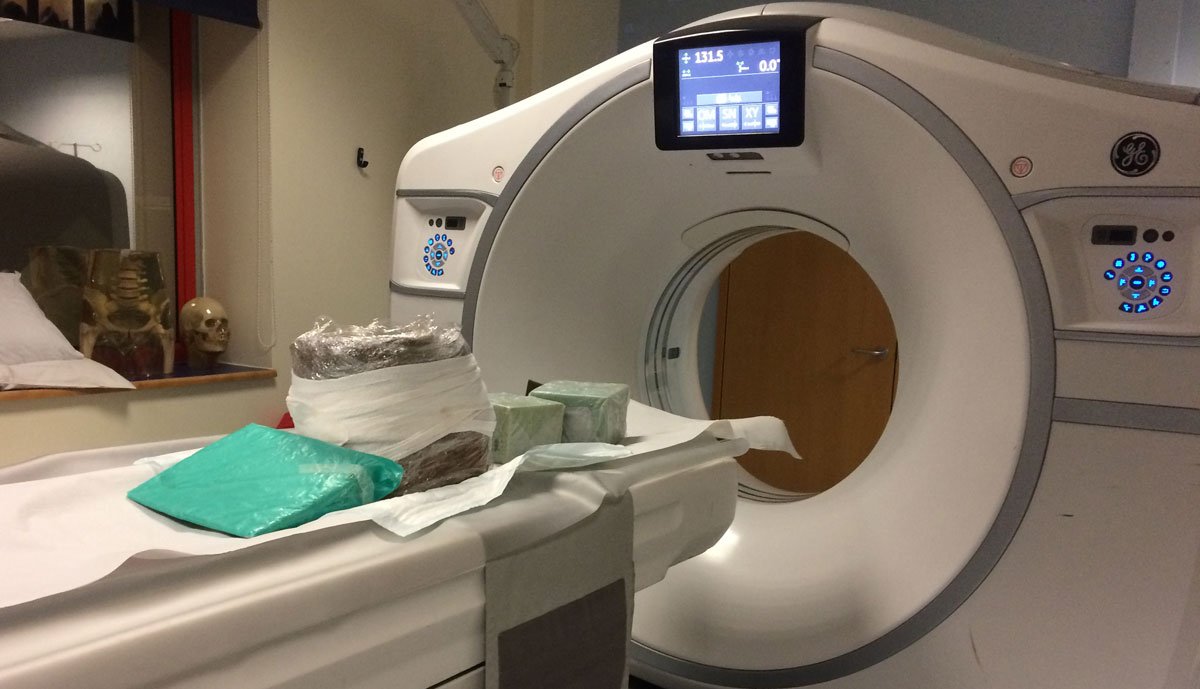
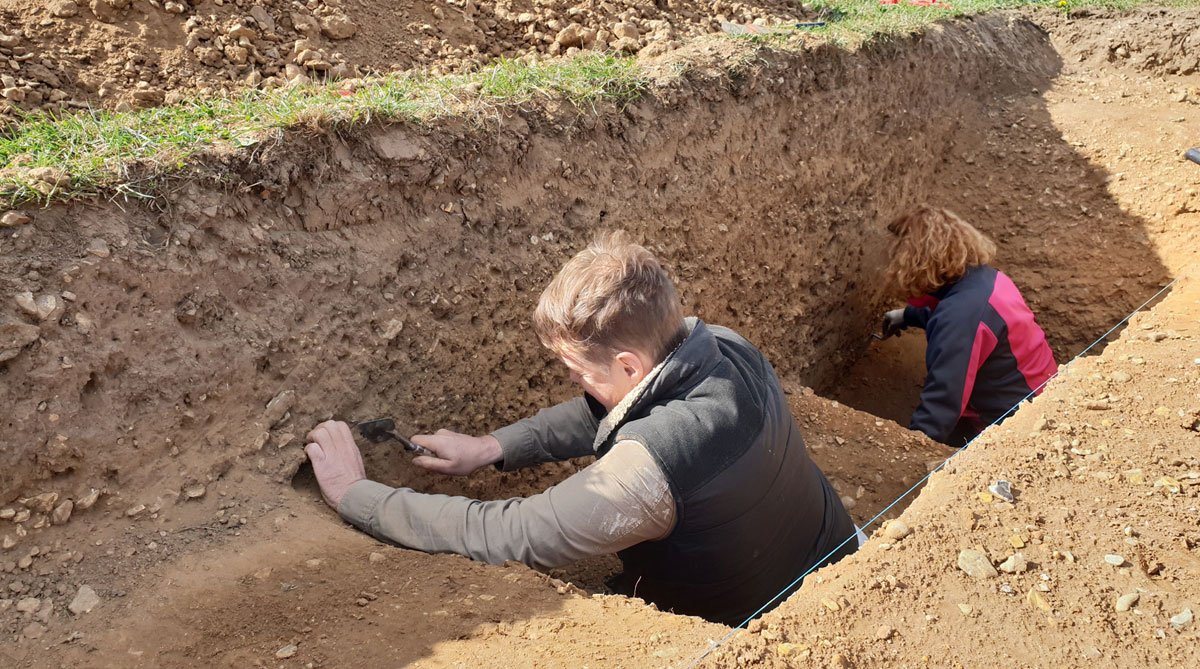
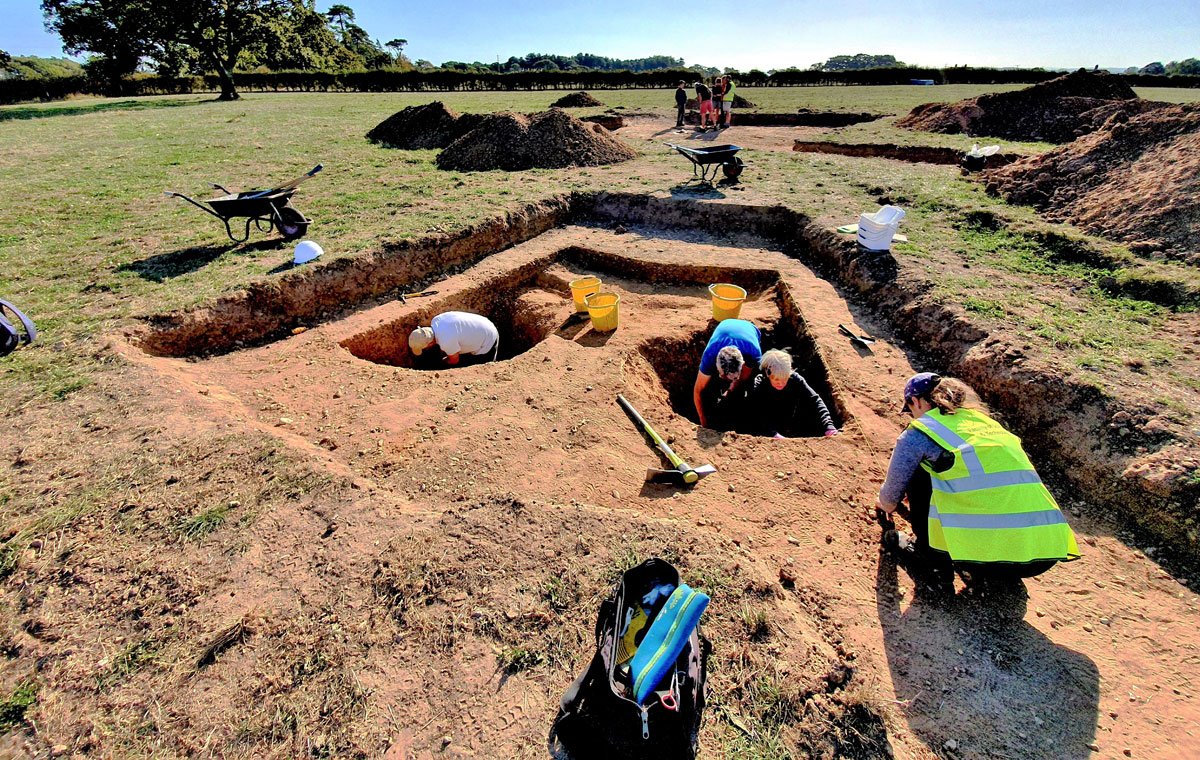
The earliest activity detected on the site through the discovery of diagnostic worked flint and radiocarbon dated organic material was from the Mesolithic period (Middle Stone Age, 8000 – 2700 BC). Mesolithic evidence in the New Forest mainly comprises isolated find spots and flint scatters from hunting and gathering type activities, likely focussed on a small number of campsites close to the Beaulieu River. Since this evidence was found in the lowest fills of the first ring ditch phase, it is thought that finds related to a Mesolithic campsite were disturbed during the initial construction of the ring ditch monument later in the Bronze Age.
Carbon dating and finds confirmed that the first ring ditch phase was constructed during the Early Bronze Age, probably within the last century of the third millennium BC. After sufficient time had passed for this first ditch to silt up, another ditch was cut around 2000 BC. This new ring ditch increased the size of the monument in plan and provided an ‘entrance’ gap on one side. This second ring ditch was re-cut on at least three occasions over the next 150 years, spanning several generations.
There then appears to have been a pause in activity of up to five centuries at the site before it was used as a cremation cemetery in the Middle Bronze Age, around 1500 – 1300 BC. Analysis of the cremated human remains from the three micro-excavated urns showed that they belonged to at least five different individuals.
The monument eventually fell out of use and would have continued to gradually erode over the following centuries. It is likely that any remaining above-ground earthworks, such as a mound or bank, were removed when the surrounding land became part of an agricultural landscape in the medieval or post-medieval periods.
Monuments with ‘entrances’ may have been used to carry out ceremonies that were important to the local community.
It is still unclear what the original form and function of this Bronze Age monument was. Prior to the fieldwork it was assumed that it was a relatively simple barrow, but the fieldwork has shown it to be more complex than initially thought. The presence of a gap in the recut ditch suggests it was possible to enter the interior of the monument. Monuments with ‘entrances’ such as this one may have been meeting spaces used to carry out ceremonies that were important to the local community and often come under the broad term of ‘mini henge’.
The function of the monument may have also changed over time, leading to changes in its layout. There is evidence of regular modification and a continuity of use, implying that this monument was more than a place to bury the dead and played a significant role in the local community for many generations.
A significant contribution to our knowledge of Prehistoric activity in the New Forest.
The archaeological investigation of this ring ditch monument has made a significant contribution to our knowledge of Prehistoric activity in the New Forest, particularly in adding to our understanding of Bronze Age monument building and funerary practices. It has shown that these activities and monuments may be more complex than they appear at first glance and provides a new benchmark for further exploration of these types of sites in the future. The project also proved a fascinating experience for numerous local volunteers, who had the rare opportunity to explore a site constructed by fellow residents of the New Forest some 4000 years ago!
Our Past, Our Future
Our Past, Our Future is a Landscape Partnership Scheme for the New Forest which, supported by the National Lottery Heritage Fund, is undertaking a range of projects to restore lost habitats, develop Forest skills and inspire a new generation to champion and care for the New Forest. The partnership focuses on the enclosed lands which surround the Open Forest.
The five-year scheme includes 21 projects and is being led by the New Forest National Park Authority working with several delivery and funding partners.
For more information about the Our Past, Our Future scheme, visit www.newforestnpa.gov.uk/landscapepartnership

